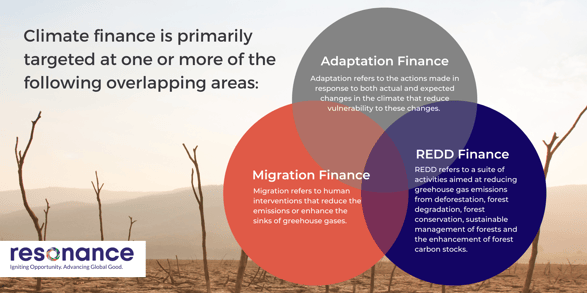If there is ever a moment in which we are collectively facing breakpoint change and a disruption to the way we do business, that moment is now.
Climate change, threats to biodiversity, and systems sustainability, often intertwined, are urgent and complex challenges that are impacting companies and their stakeholders. And growing demands from consumers to make radical changes in the form of ESG, Scope emissions reductions, and sustainability commitments, are pushing companies to design and implement novel and sometimes radical solutions that are departures from business as usual and drive social, environmental, sustainable impact.
As we have described in previous Insights, corporate ESG is being shaped externally by the investment market; specifically, typically younger investors who want to ensure their money is being invested in companies that have detailed roadmaps regarding their environmental, social, and governance goals, as well as metrics and actions that detail how impact will be measured. In other words, in theory and hoped practice, measured impact matters.
The same is true among agencies and organizations that fund global development and cross-sector partnership impact; there is a growing movement to tie funding support to verifiable outcomes and results.
This aim underpins the design and testing of several innovative finance tools in recent years. Results-Based Climate Finance (RBCF) is one of them.
What Is Results-Based Climate Finance (RBCF)?
Results-Based Finance (RBF) mechanisms link financial rewards to outcomes or results, rather than supporting the financing of a project or service upfront. Specific to climate change, RBCF is a type of RBF mechanism in which payments are made for climate mitigation or adaptation results. How does this work, generally?
According to the World Bank, 95% of international public climate finance is provided upfront before a project is operational. By contrast, RBCF, like its umbrella RBF, is paid when results are achieved, either at the close of a project or initiative, or in some instances, upon meeting interim milestones.
This departure from more conventional funding mechanisms has been gaining traction not only at the World Bank, but also among other funding agencies and organizations, including USAID.
That has to do with the “R” (“Results”) in RBCF, which have been linked to better outcomes and moving the needle on climate goals and commitments and often energy efficiency. Generally, results can be defined as any milestone that indicates progress toward reducing greenhouse gas (GHG) emissions.
RBCF approaches typically rely on carbon finance, and can be combined with other instruments, such as loans, grants, or guarantees, plus a vehicle for funding delivery.
As part of these funding mechanisms, payments are typically dispersed once pre-agreed targets have been met and following GHG emission reductions verification, meaning, demonstratable confirmation these reductions would not have occurred otherwise. In many RBCF agreements, emission reductions are retained by the country that has generated them and can count towards that country’s national climate target (or NDC).
What Constitutes “Innovative,” and What Potential Benefits do Innovative RBCF Mechanisms Yield?
Innovative financing is the manifestation of two important trends in global development: an increased focus on programs and initiatives that deliver results, and a desire to support and expand public-private sector collaboration.
An innovative finance mechanism is “innovative” when it does at least one of three things: (1) deploys proven approaches to new markets (including new segments and customers); (2) introduces novel approaches to established problems (including new asset types); or (3) attracts new participants to the market (such as private sector, commercially oriented investors).
Many believe that carbon finance or RBCF mechanisms via new markets, new approaches, and new participants hold greater potential to incentivize climate action and contribute to better, localized outcomes in transformative and catalytic ways. These results include, among others:
- RBCF has the potential to accelerate mitigation investments, particularly where the incentives align with cost structures over the lifecycle of a project and address political economy barriers and up-front investment costs.
- Innovative climate financing instruments complement traditional resource flows—such as foreign direct investment, aid, and remittances—to mobilize additional resources for mitigation, adaptation, and development, and address specific institutional barriers and market failures.
- These innovative finance mechanisms serve also as the collateral of an ongoing revenue stream during project implementation and operation. In this way, RBCF may also leverage and crowd in additional up-front capital investments, including the involvement of the private sector actors.
- RBCF can play a vital role in helping developing countries to realize and expand their climate goals, generating verifiable carbon emissions reductions to cover NDC commitments and stimulate international carbon markets.
- RBCF can be an efficient mechanism to delivering climate finance under Article 9 of the Paris Agreement. These instruments are often intended to generate emissions reductions credits (ERCs) measured and structured to facilitate trading as Internationally Transferred Mitigation Outcomes (ITMOs) in line with Article 6. In directly paying for verified ERCs, RBCF may have the ability to accelerate the transition of entire economic sectors to lower emissions short and long-term.
The call for innovative RBCF mechanisms is contextualized by a broader effort and momentum among an array of funding agencies and actors to recognize the two issues of climate and development are inextricably linked.
Ultimately, innovative approaches to climate finance should leverage existing funds to accelerate private sector investment while developing carbon markets and driving more ambitious climate action and goal setting among countries.
We have identified in the last year, several examples in which partnerships —including companies, investors, and financial institutions—are exploring avenues to mobilize private finance and collaboration for climate change.
Where Does RBCF Work Best?
The World Bank has identified three areas that are particularly well-suited to RBCF financing:
- Natural climate solutions focused on forestry, land use, oceans, and agriculture, as well as other sectors that support natural capital assets vital services.
- Sustainable infrastructure in water, transport, cities, energy, and other sectors that provide public goods to underpin broad-based, inclusive, and sustainable economic activity.
- Fiscal and financial solutions that directly or indirectly provide or mobilize resources for climate action, such as removal of fossil fuel subsidies, carbon taxes, loans linked to sustainability including UNSDGs, and the greening of public financial institutions, among others.
These three areas are wide open in terms of potential for innovative finance approaches. According to the latest Joint Report on Multilateral Development Banks' Climate Finance released this week representing 9 of some of the largest multilateral development banks, 3-4% of all reported climate funding was dispersed via RBCF mechanisms in low and medium-income economies. 
This may not seem significant. However, across the funding landscape, some RBCF models and mechanisms have been proven successful, some are ripe for scaling, and many others are still new ideas in the testing stage. In other words, the market for innovative climate finance is still young, but evolving.
Partnerships Should Consider Innovative Finance Solutions Like RBCF In Proposals
A World Bank report suggests RBCF is well suited to climate mitigation because “reducing carbon emissions focuses on a well-defined and measurable global externality.” Additionally, the report notes,
“RBCF facilitates carbon pricing and market building, supports host countries’ policy processes to achieve their NDCs, and advantages private sector activity and private financing.”
Although there have been fewer programs utilizing RBCF for adaptation, there is still some promise in that area as well worth exploring.
We have described here a movement in which funding agencies and organizations like the World Bank or USAID, for example, are testing mechanisms for funding to measurable results and outcomes rather than simply distributing funds upfront in project awards.
There have in the last decade been numerous initiatives that are testing results-based finance and RBCF mechanisms under this umbrella of innovative finance and are thus contributing to foundational climate finance flows in several regions.
This means there may be opportunities for companies engaged in cross-sector partnerships to proactively propose RBCF mechanisms in its own funded scope of work rather than or in addition to being responsive to call for proposals by a funding agency or organization. This might include actively seeking to involve Development Finance Institutions (DFIs) that are sector-specific, for example.
Considerations For Inclusion Of Innovative Finance Mechanisms Like RBCF, Including Help
In taking this route, the starting point includes engaging all partners to explore the right high-potential funding and finance opportunities that achieve a balance between partnership and initiative specifications, absorbability, and financing requirements.
Stakeholders should focus on building partnership networks that maximize the success of emerging market investments. This means understanding how and where to look for funding opportunities by considering the scale, type of financing, type of intervention, geography or sector, and what funders are looking for, specifically.
Companies and organizations engaged in partnerships don’t always have the bandwidth or experience in this pursuit. Given our own track record in global development via partnership development and implementation, Resonance has a firm footing in this undertaking. Throughout, we empower our clients to make catalytic investments including RBCF that drive development and sustainable impact and promote private sector opportunity.
Resonance Senior Manager Elina Sarkisova co-wrote before her arrival to Resonance the 2018 Innovative Finance For Development: A Guide for International NGOs in 2018 linked here. It is a good resource to learn more about innovative finance tools available at the intersection of global development, funding, and sustainable impact challenges.



